The Hooters Story, pt. I
The Hooters owned the Philadelphia music scene in the mid 1980’s. This was no small accomplishment in a city rich in musical history, from jazz to rock to soul, but this band worked hard and took no sector of their audience for granted. They expanded beyond the typical night club scene and tapped the high school market in the Philadelphia area by performing for kids too young to get into clubs but with plenty of enthusiasm. Soon Hootermania swept across Southeastern Pennsylvania. But far more important than their popularity was the music this band composed and performed, fusing 1980s pop/rock with elements of reggae, ska, and folk, and the edge of unique instrumentation including that weird instrument which gave the band their name.
The band formed in the wake of a 1970s cerebral trio called Baby Grand, which had limited success with their two studio albums. Keyboardist Rob Hyman had met guitarist Eric Bazilian while they were both science majors at the University of Pennsylvania, but soon these Ivy Leaguers would choose music over more traditional (and lucrative) careers in chemistry and medicine. With the dissolution of Baby Grand, Hyman and Bazilian worked on forming a more mainstream band as well as started composing new material.
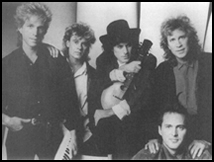 The Hooters were formed as a five piece in 1980, with guitarist John Kuzma, bassist Bobby Woods and drummer David Uosikkinen joining Bazilian and Hyman. They took their name from the nickname for the melodica, a unique type of keyboard harmonica which originated in Germany. Starting on July 4, 1980 the band spent the next two years playing everything from clubs to high schools and appearing on local television shows around Philadelphia and other areas of the East Coast. During this time, the band recorded several tracks to be released as singles including “Man in the Street”, “Fightin’ on the Same Side”, “Rescue Me”, and “All You Zombies”, and started to receive significant airplay on prominent rock stations.
The Hooters were formed as a five piece in 1980, with guitarist John Kuzma, bassist Bobby Woods and drummer David Uosikkinen joining Bazilian and Hyman. They took their name from the nickname for the melodica, a unique type of keyboard harmonica which originated in Germany. Starting on July 4, 1980 the band spent the next two years playing everything from clubs to high schools and appearing on local television shows around Philadelphia and other areas of the East Coast. During this time, the band recorded several tracks to be released as singles including “Man in the Street”, “Fightin’ on the Same Side”, “Rescue Me”, and “All You Zombies”, and started to receive significant airplay on prominent rock stations.
During this time, the band was managed by Hyman and his girlfriend. The climax of this early era of the band came on September 25, 1982, when The Hooters opened for rock legends The Who during one of their farewell tour shows at JFK Stadium. However, the group decided to separate in early 1983 as Hyman grew tired of managing in lieu of composing and the rest of the band began to burn out from constant touring.
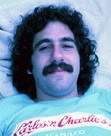 That same winter, Bazilian and Hyman were enlisted by another Penn classmate, producer Rick Chertoff as session players on an album he was producing for a young singer/songwriter named Cyndi Lauper. Bazilian played bass, saxophone, and added vocals to the album, which would become the Grammy winning album She’s So Unusual. Hyman played keyboards and co-wrote the international smash hit “Time After Time”, which was also nominated for a Grammy. Following this hugely successful project, Bazilian and Hyman decided to give The Hooters another try in late 1983.
That same winter, Bazilian and Hyman were enlisted by another Penn classmate, producer Rick Chertoff as session players on an album he was producing for a young singer/songwriter named Cyndi Lauper. Bazilian played bass, saxophone, and added vocals to the album, which would become the Grammy winning album She’s So Unusual. Hyman played keyboards and co-wrote the international smash hit “Time After Time”, which was also nominated for a Grammy. Following this hugely successful project, Bazilian and Hyman decided to give The Hooters another try in late 1983.
Uosikkinen returned on drums but Kuzma and Woods had moved on to another band and were replaced by John Lilley on guitar and Rob Miller on bass. Club owner Steve Mountain was brought in as full-time manager, leaving Hyman and Bazilian free to concentrate on the music. The reformed band immediately started work on their first album.
Amore contains the original versions of several songs that were re-recorded for the band’s major label debut, 1985’s Nervous Night, such as “All You Zombies”, “Hanging On a Heartbeat”, and “Blood From a Stone”. These original versions have a pronounced ska bounce and the production is not overpowering, there is a distinct live show energy. Upbeat and danceable rock that used keyboard/synth sounds were all the rage in the early 80’s, but The Hooters surrounded them with guitar, mandolin, real drums (from a drummer who hits ’em really hard), and vocals from guys who can carry a tune but don’t have “perfect”, processed voices. These were the Hooters and their signature sound owned that term long before before it became synonymous with calendar girls in tight t-shirts serving chicken wings to drooling patrons adopted the same name.
With the independent release of Amore selling over 100,000 copies regionally and a radio contest to have the band play at your high school receiving millions of entries, the major labels were paying attention and the band was soon signed by Columbia Records. Unfortunately, around the time when the band was getting ready to sign, Rob Miller was seriously injured in a car accident and had to drop out of the band. Andy King, from the Delaware band Jack of Diamonds, was recruited as the band’s new bass player and completed the lineup that would take the band through the heart of their mainstream success.
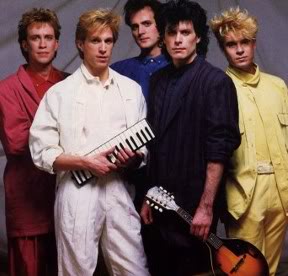 The music was the core of the band’s appeal, but Steve Mountain’s marketing was crucial to their success. They enlisted the help of a fashion consultant, a personal trainer (Pat Croce, who trained some of Philly’s finest professional athletes and eventually became owner of the 76ers), and for the stage and publicity photos, each Hooter had a primary color – Bazilian always in black, Hyman in light gray or white, Uosikkinen in Yellow, Lilley in red and King in blue. During shows, when the lights came up, they all wore old west style dusters in their assigned color, it was a very cool image that went with their music. While it was surely a gimmick, it wasn’t over the top and certainly not something to look back at in embarrassment 25 years later.
The music was the core of the band’s appeal, but Steve Mountain’s marketing was crucial to their success. They enlisted the help of a fashion consultant, a personal trainer (Pat Croce, who trained some of Philly’s finest professional athletes and eventually became owner of the 76ers), and for the stage and publicity photos, each Hooter had a primary color – Bazilian always in black, Hyman in light gray or white, Uosikkinen in Yellow, Lilley in red and King in blue. During shows, when the lights came up, they all wore old west style dusters in their assigned color, it was a very cool image that went with their music. While it was surely a gimmick, it wasn’t over the top and certainly not something to look back at in embarrassment 25 years later.
Image was important at this stage as they were marketing themselves (all the members were in their thirties) to a much younger audience. The album was good, but the live shows were what kept the fan base growing. The band toured as the opening act for Squeeze and at one show, The Hooters were so well received that they played about two minutes over their allotted time before the power was cut and their set ended abruptly. Rumors circulated that it was a member of the headlining band who pulled the plug in a fit of envy.
While Nervous Night was the product of slick production by Chertoff, the songs themselves remain true to the roots established on Amore – driving reggae influenced rhythms and interesting arrangements with traditional folk influences. Reggae and folk are not usually closely associated, but the Hooters managed to blend them into their own version of pop/rock. The new, six minute version of “All You Zombies” was the lead national single from the album and, although it failed to reach the Top 40, endures as one of the group’s signature songs to this day. The three following singles from Nervous Night each did reach the Top 40 – “And We Danced” released in late 1985, with “Day By Day” and “Where Do the Children Go?” released in early 1986.
This was the absolute zenith of the band’s popularity and they were involved with some of the historic concerts of the era. On July 13, 1985 they were the opening band at the Philadelphia Live Aid benefit concert, performing for an international television audience. On May 18, 1986, they participated in “America Rocks”, the concert portion of the 1986 celebration of the restoration of the Statue of Liberty and Ellis Island. Then on June 15, 1986, The Hooters participated in a benefit concert on behalf of Amnesty International, before a packed Giants Stadium in East Rutherford, New Jersey. The band also embarked on an international tour including several dates in Australia.
~
More on The Hooters
Nervous Night album review
One Way Home album review
Out of Body album review
Largo album review
The Optimist by Eric Bazilian album review
Dave Uosikkeinen profile
The Hooters Appreciation Day
The Hooters website
Buy The Hooters music

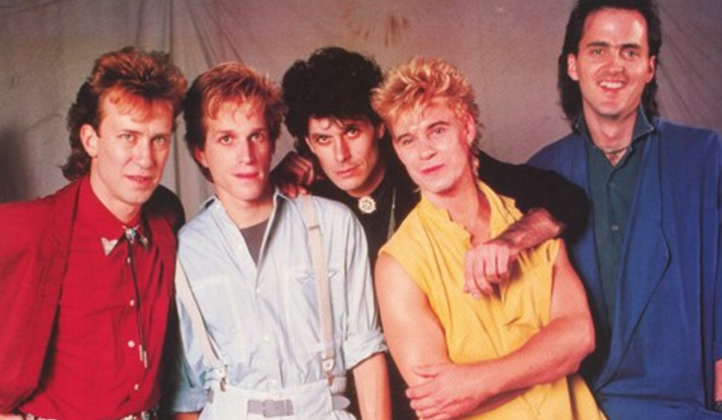
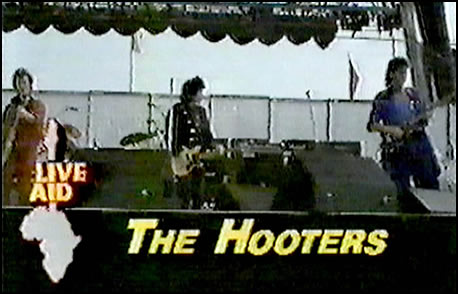
Pingback: Dave Uosikkinen | Keystone Rock Review
Pingback: She’s So Unusual by Cyndi Lauper – Classic Rock Review